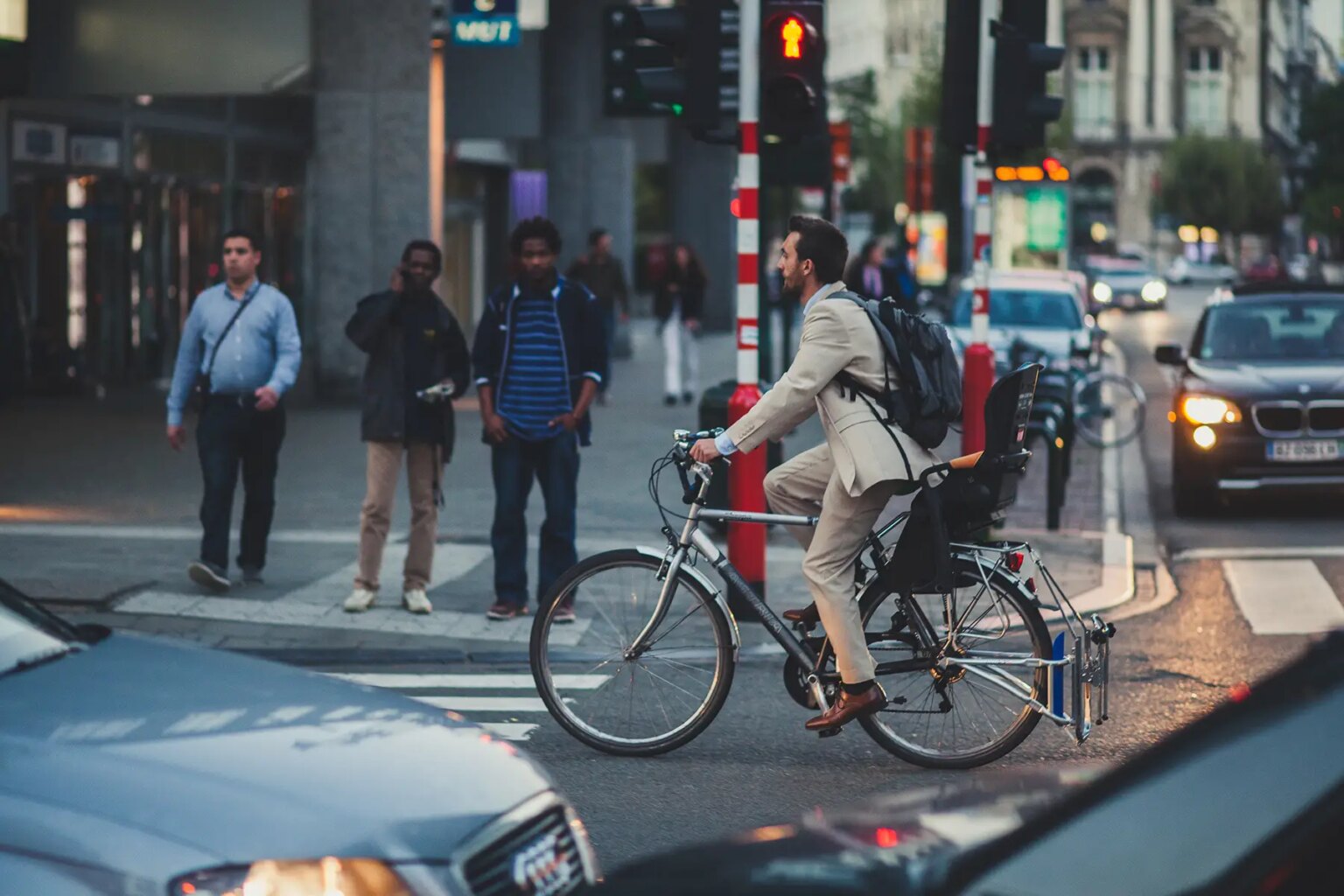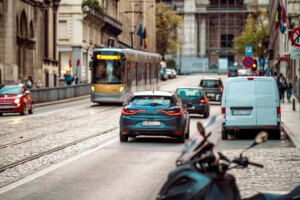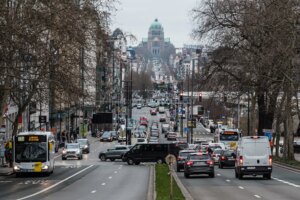When I first moved to Brussels three years ago, I used to commute by bike across the Place Flagey to Avenue Louise. Every morning I would pass a woman heading in the other direction, wobbly and uncertain on her brand new mountain bike, helmet firmly fastened, reflective vests and lights all over, a look of terror in her eyes as if she was being forced to swing dance in a minefield.
I realized in watching her, just how intimidating biking in Brussels can be. But trust me, it can be done! With some simple guidelines, biking in Brussels can become such a safe, efficient, and pleasant way to get around the city that you’ll never move any other way; that’s to say nothing of all the pollution you’ll save by doing it.
Allianz Assistance
Keep your bike safe with Allianz Assistance. Their bicycle insurance protects you in case of theft, while their roadside insurance provides speedy help and replacement transport. Don’t get stuck by the side of the road – calculate your premium with Allianz Assistance.
Rules of the road
For starters, you need to know some basic rules.
Bikes are allowed in both directions on almost any street in Brussels. For one-way streets, this means that as long as the sign says “Uitgezonderd/Excepte” with a picture of a bike, you can ride in the opposite direction. Studies have shown that there is no increase in accidents on these kinds of roads.
Otherwise, cyclists must follow the same rules as cars: giving priority to pedestrians and vehicles entering from the right, stopping at red lights, and obeying traffic signs. Bikes cannot ride on the sidewalks.
Where there is a bike path, bikes must use it. If it is shared with pedestrians, pedestrians have the right of way.
Once you start biking, you’ll notice that some streets are more bike-friendly than others, certain roads follow ridges rather than climbing hills, and there are some intersections to be avoided at all costs.
The best way to find your own cycling routes is to take a look at the Brussels cycling map, available for sale in a waterproof hardcopy or for free download. The map shows the contours of hills and also codes the streets of the city in terms of their openness for bikes. It can seem a little complex at first; once you learn how to read it, you won’t leave home without it.
Security
If there is one basic rule of bike security in Brussels it is this: skimp on the bike, splurge on the lock. Bike theft is reality in Brussels, if you bike long enough, you’ll have one stolen; consider it something of a rite of passage.
Still, splurge on the lock. Any bike shop should be able to tell you which locks are the best, and it is well worth the investment – forty euros on a lock is cheaper than two hundred euros on a new bike.
But even the best lock isn’t foolproof. Bikes should always be attached to an immovable object (bike racks are best) and the wheel (particularly if it is a quick-release wheel) should be attached to the frame.
The Brussels region also offers a service of bike engraving. This can be done for free at any bike event or on specific days at your local commune and police station, or for €1 at the Pro Velo offices in Brussels.
This technique engraves your national identity number indelibly onto the frame of the bike with the goal of deterring theft and helping to restore recovered bikes to their owners.
Regardless, make note of the bike’s make, model, and frame number. Keep them somewhere safe so that if there is a theft, you can report it with all the details.
And please do report it! As of now, bike theft is not a major priority for the Brussels police, and this has a lot to do with the statistics on bike theft being under-reported! Too many people just shrug it off and go to Gare du Midi to get a new bike. By reporting theft, you can help make the roads safer for all the other bikes rolling around Brussels now. In addition, if you insure your bike, you’ll be covered for the costs if it gets stolen. Insurers providing this coverage include Allianz Assistance.
Safety
Riding a bike in Brussels is generally quite safe. According to a study conducted by the Brussels region, even when accidents occur, ninety percent aren’t serious enough to merit even calling an ambulance.
The leading cause of accidents? Drivers opening a car door into a passing cyclist. For that reason, the law allows cyclists eighty centimeters of space between their bikes and parked cars. Don’t hesitate to take it, no matter if it bothers the drivers behind you!
And of course, cyclists can protect themselves. Reflective vests and lights, for instance, can make a big difference, particularly at night. In a majority of accidents, the study found, cyclists were not wearing reflective vests.
Helmets are another important element of safety. It’s hard not to feel a little dorky wearing one the first time, but this falls into the category of better safe than sorry – and once you get in the habit, you hardly notice you’re wearing it.
Bells are important too. They’re the best way to let people know you’re coming, and they’re fun for scaring pigeons.
Gracq and ProVelo, two non-profit organizations working to promote cycling in Belgium, offer classes on bike safety. For kids, they even offer classes on biking in traffic with parents acting as sympathetic drivers. There is also Bikepooling (www.bikepooling.be) where volunteers will help you set up and ride a bike commute.
The best step for cycling safety though? Getting more cyclists on the road! The more cyclists there are, the safer the environment becomes. The best thing you can do for yourself then is to get on that bike!
Conquering Brussels
There are some last words we should say on the subject of biking in Brussels — cyclist to cyclist now. Brussels has, you may have noticed… Hills.
Yes, the H-word. We’ve all been sitting in a car and seen a cyclist bike past, standing on her pedals and clawing her way up the Mont des Arts or the Avenue Terveuren, and we’ve all thought: “Suckers!”
But I’ll tell you the truth, the little Brussels cyclist secret: they’re not half as bad as they look. Once you make it up a hill once, you always make it up. In time, they even become the best part of the ride, the moment when you know you’re getting yourself in shape and that rather than burning fossil fuels to get yourself home, you’re burning calories, you’re generating endorphins, and you’re making the planet a better place.
Useful resources
- Flanders: www.groteroutepaden.be www.fietsroute.be (all in Dutch)
- Wallonia: www.ravel.wallonia.be (French) or, Rando Vélo (Dutch, French, German and English)
- Renting a Bike: www.nmbs.be – Look under fietsverhuurstations to buy a train ticket including a rented bike.
- Renting folding bikes at Gare du Nord in Brussels: https://www.recyclo.org/pointvelo/home.htm
- Cycling advocacy: GRACQ, Pro Velo




